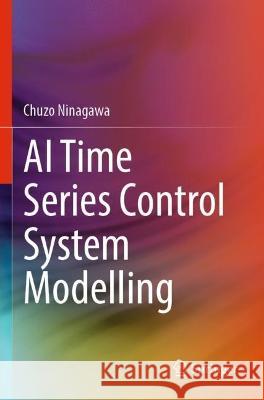AI Time Series Control System Modelling » książka
topmenu
AI Time Series Control System Modelling
ISBN-13: 9789811945960 / Angielski / Miękka / 2023
AI Time Series Control System Modelling
ISBN-13: 9789811945960 / Angielski / Miękka / 2023
cena 402,53
(netto: 383,36 VAT: 5%)
Najniższa cena z 30 dni: 385,52
(netto: 383,36 VAT: 5%)
Najniższa cena z 30 dni: 385,52
Termin realizacji zamówienia:
ok. 22 dni roboczych
Dostawa w 2026 r.
ok. 22 dni roboczych
Dostawa w 2026 r.
Darmowa dostawa!
This book describes the practical application of artificial intelligence (AI) methods using time series data in system control. This book consistently discusses the application of machine learning to the analysis and modelling of time series data of physical quantities to be controlled in the field of system control.
Since dynamic systems are not stable steady states but changing transient states, the changing transient states depend on the state history before the change. In other words, it is essential to predict the change from the present to the future based on the time history of each variable in the target system, and to manipulate the system to achieve the desired change.
In short, time series is the key to the application of AI machine learning to system control. This is the philosophy of this book: "time series data" + "AI machine learning" = "new practical control methods".
This book can give my helps to undergradate or graduate students, institute researchers and senior engineers whose scientific background are engineering, mathematics, physics and other natural sciences.











